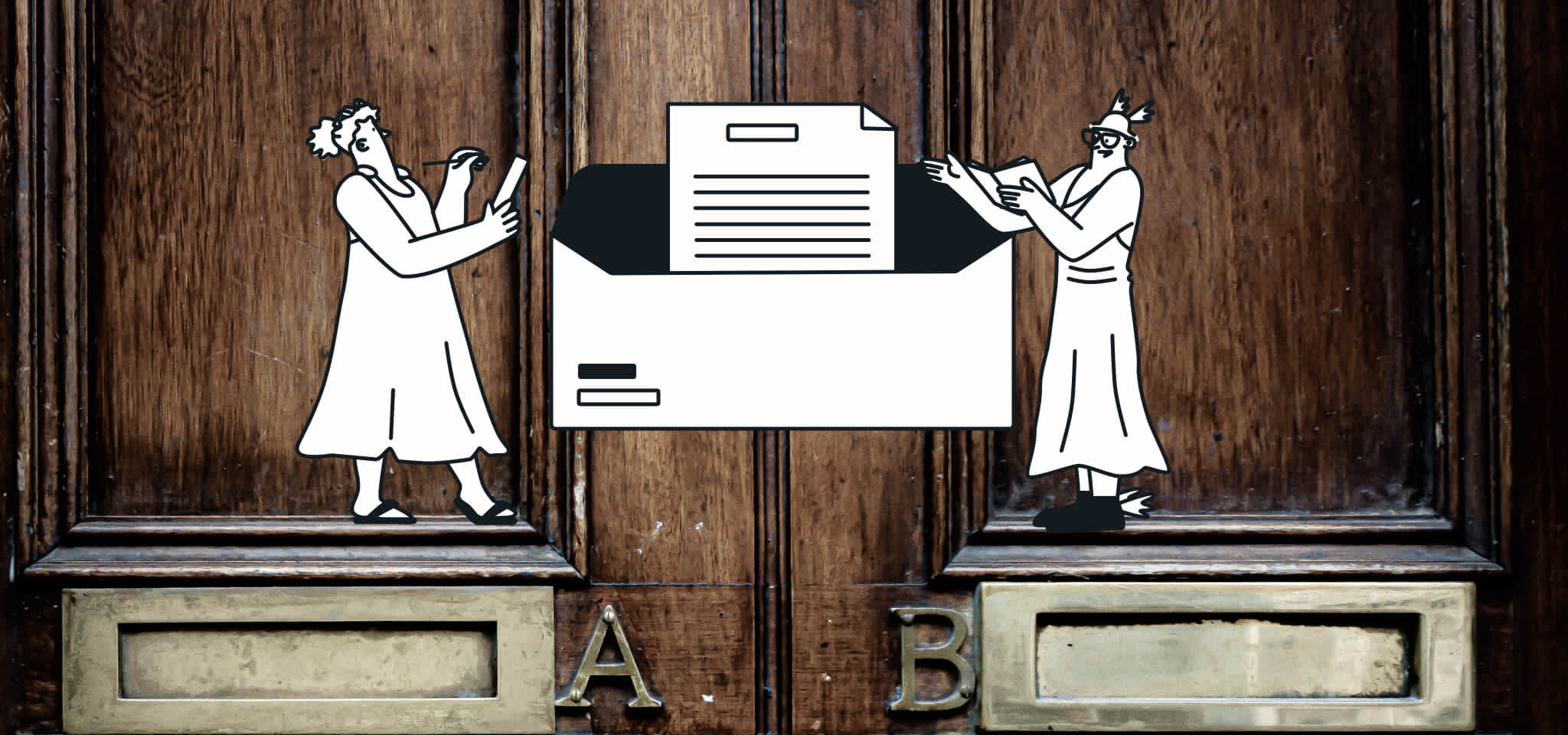Home
The Mailjet Blog
Email best practices
Email Marketing Best Practices: 12 Tips To Send Better Campaigns
Email best practices
Email marketing best practices to improve your performance
Want to improve your email marketing campaigns? These email marketing best practices will take you to the next level. Read more...

PUBLISHED ON
Following guidelines might not be the most fun thing in the world, and you might think it puts a bit of a limit on your creativity. But email is one of the most flexible and customizable marketing channels, and there’s a lot you can do to stand out and show off.
These guidelines are going to let you be as creative as you want with your email marketing strategy (that’s right, go wild with the digital paint and glitter), and see the results you want as well. So let’s get into it!
Table of contents
Best practice #1: Double opt-in
Best practice #2: Simplicity is key
Best practice #3: Make your emails more relevant
Best practice #4: Keep your branding consistent
Best practice #5: Regarding subject lines…
Best practice #6: CTAs
Best practice #7: Adding ‘alt text’
Best practice #8: Test it out
Best practice #9: Make use of those email metrics
Best practice #10: Request subscriber feedback
Best practice #11: Keep the spam in the can
Best practice #12: Clean your list
Top 12 email marketing best practices
Following guidelines might not be the most fun thing in the world. You might think it puts a bit of a limit on your creativity. But these guidelines are going to let you be as creative as you want, and see the results you want as well. So let’s get into it!
Best practice #1: Double opt-in
Let’s start at the beginning and say someone has just signed up for your emailing list…why would you want to send another email to confirm their interest? Because double-opt in can easily reduce your spam complaints dramatically and improve your deliverability.
A double opt-in is an email that is sent out to your new subscriber asking them to confirm their subscription (the “double” part) by clicking a button within the email. Mailjet lets you build your double opt-in email and helps you send them out as soon as you have a new subscriber.
You’ll want to keep these emails on the shorter side. Make sure you put your CTA, in this case the “confirm subscription” button, at the top of the message. It’s the main purpose of this email, so make it stand out! As for the rest of the email? Let your customer know what to expect, and why subscribing to your awesome brand was the best decision they made all day.

Best practice #2: Simplicity is key
You love your brand, and you want to share as much of it as you can with your subscribers. However, poking them in the eye with it at every waking opportunity is going to be counterproductive to your goal of engaging your customers.
Think of it this way: Have you ever clicked into a website and just suddenly been bombarded with images, pop ups, and interactive content? You had no idea where to start, so you just didn’t start at all, opting instead to click out and find a new website that didn’t assault your senses. Your email should have enough content to be worthwhile interacting with, but not so much that there is no focus to it.
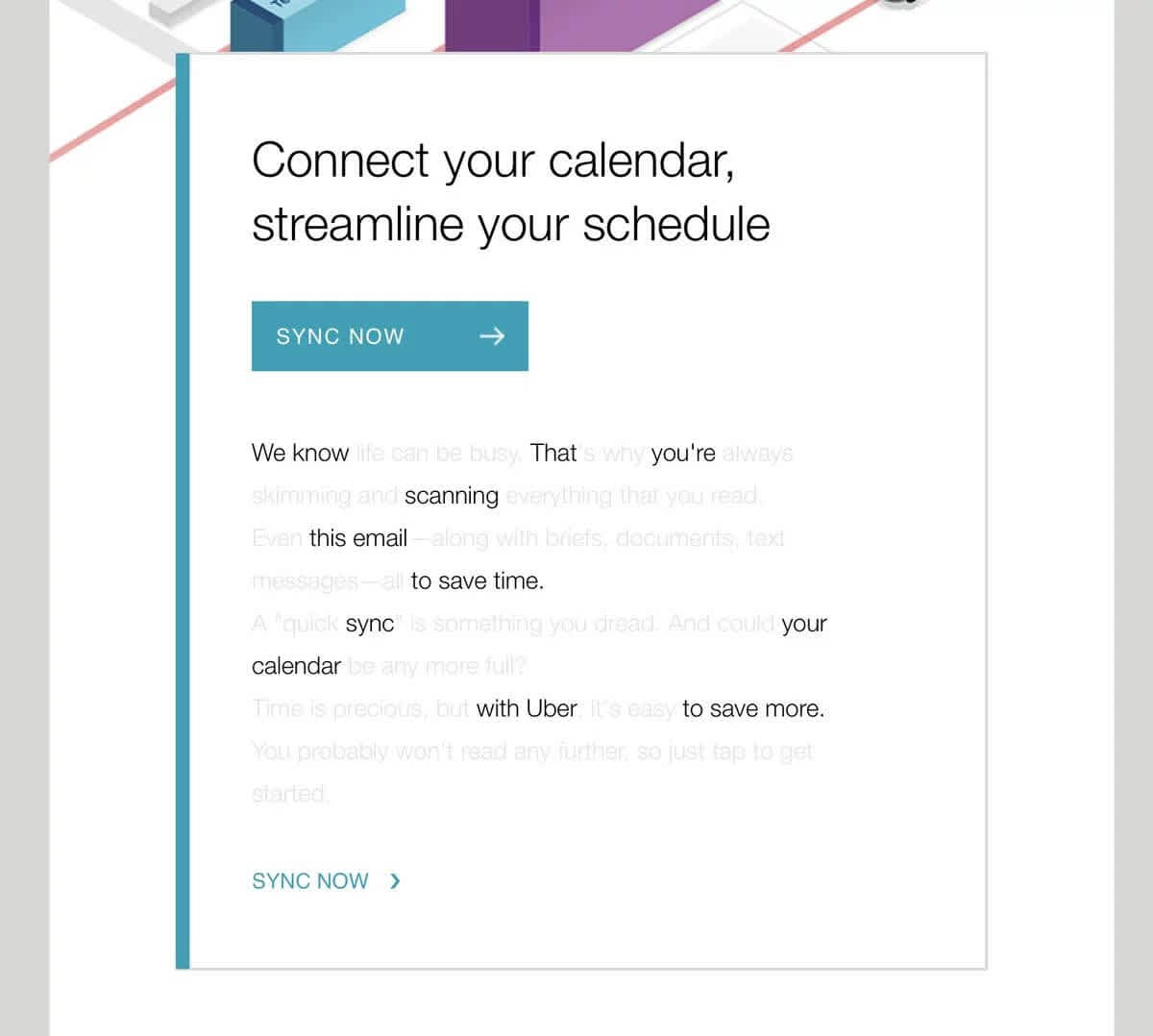
Best practice #3: Make your emails more relevant
We all know humans are better than robots (exhibit A: Blade Runner). Emails with a bit of personalization in the subject line, like adding a name, for example, have a higher rate of being opened. In fact, data from our 2024 Email Engagement Report reveals that 61.2% of respondents think that a personalized, interest-based email subject line is a somewhat/very important factor when deciding whether or not to open an email.
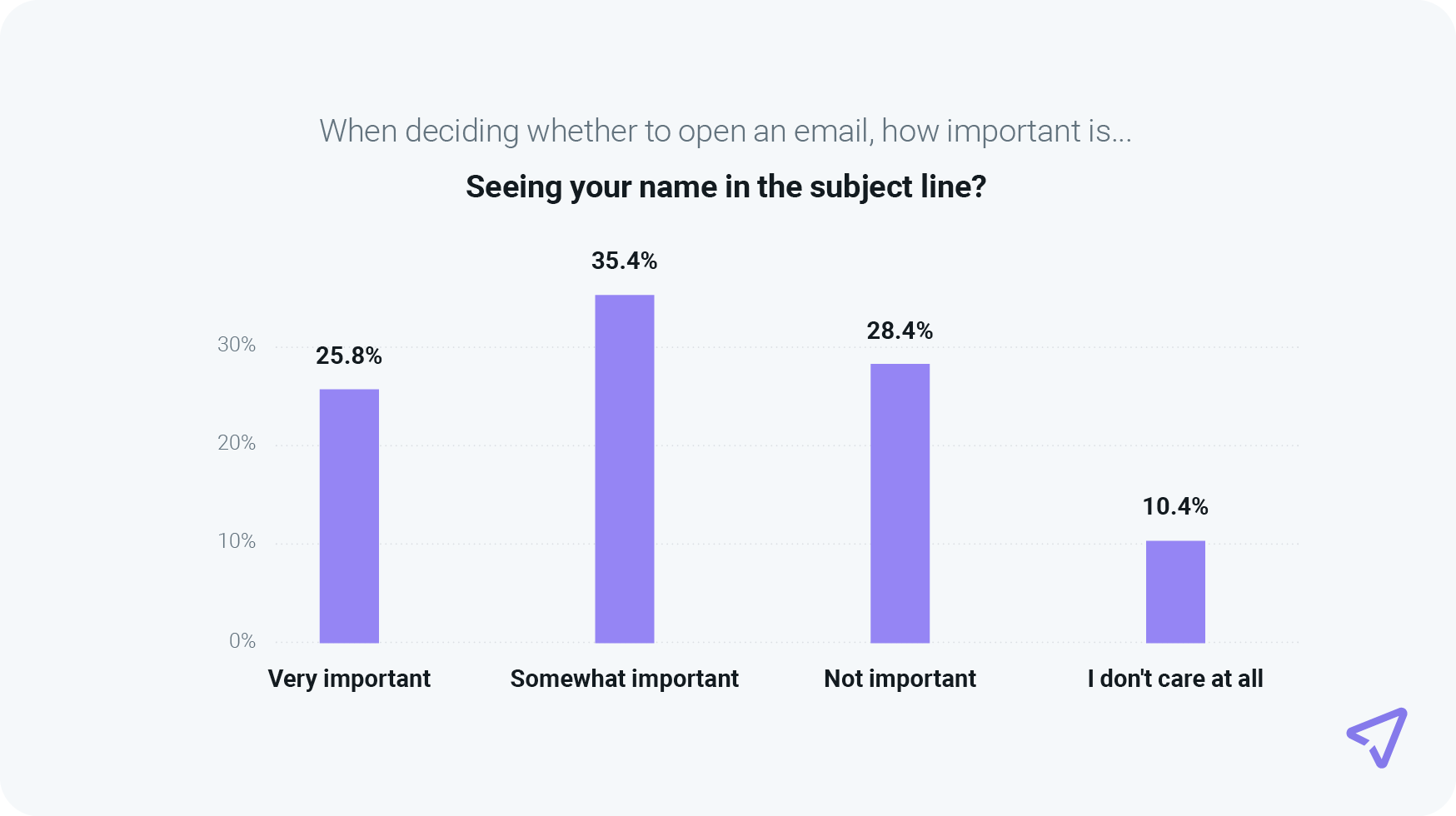
But the subject line isn’t the only place where you can add a personal touch. Beyond just adding it in the text of the email, you can also personalize by your customer’s behavior. This is where segmentation comes in.
Segment your customers by age, location, or even favorite products, and then work on personalizing emails that are specifically made with these groups in mind. Of course, be careful not to get too creepy with it... Maybe stay away from subject lines like “Mary, we know what you want and here it is” and similar appeals…it’s not a good way to make friends and influence people.
Best practice #4: Keep your branding consistent
Your brand’s image is important, and you want your email marketing to keep that image consistent. The colors, copy, design, and tone should all be kept in mind because you want your customers to recognize your emails week after week.
If you’re working as part of a team, it can be hard to keep branding consistent with so many cooks in the kitchen. That’s why at Sinch Mailjet, we made it possible to lock sections so they will remain the same from one email to the next. You can optimize and lock in a header and footer, and then let your team take creative liberty over all the rest.

Best practice #5: Regarding subject lines…
We’ve already talked a little bit about subject lines, but since it plays such a big role when it comes to getting your emails opened, let’s chat about them a bit more.
Obviously, you don’t want your subject line to look spammy – but there is a lot more to them than that. Ideally, your subject line will be short and sweet, but also engaging, enticing, and appealing to the users’ interests. It’s the opening act to an effective email.
You may think that the subject line (so short, so small) isn’t as important as the email’s body, but it’s one of the best marketing tools in your toolbox.
To get maximum benefit, you’ll really need to make sure your subject line is optimized for success. You’ll want to keep it somewhere between 30-50 characters, keep it consistent with your brand image, use it to describe what your email messaging is about and why it appeals to the user’s interest, and make it all but impossible not to click on. Tall order, huh?
There are many different ways to make your subject line stand out in the inbox. Just to give you a few ideas, you can add a couple emojis (being careful not to overdo it), add the recipient’s name to give it a personal touch, or include action verbs that call on them to interact. If it matches your brand image, you can even keep part or all of your subject line the same every time for different emails so your subscribers recognize your messages when they get them.
Regardless of which tactic you choose, it’s a good idea to test it out to find out what works best. A/B Testing can help you out with this. You can test multiple different subject lines by sending each one to a small group of contacts, and then the best-performing one will be sent out to the remainder of your contacts.
Best practice #6: CTAs
CTAs, or call-to-actions, are likely going to be the focus of your email. They are what you hope your subscriber clicks on when they’re scrolling through. Because of their importance, you’ll want it to stand out from the rest of the email content.
“How do I do that?” you may be asking. Color, copy, design and placement all play a role in optimizing your CTAs.
The color should fit your brand image and make the CTA stand out from the background of the email. The CTA’s copy is both what is written on the button, as well as the text of the email that surrounds it. Again, it should match your brand image, but it’s also a good idea to get a little creative. Average, run-of-the-mill buttons like “click here” and “read more” aren’t exactly eye-catching.
When paired with the design of the button (like a creative shape and size), you can really boost your clicks.
When you’re placing your CTAs, there are some things you’ll want to keep in mind.
First off, you’ll want one right when the email is opened, with no scrolling required. You’ll also want one at the bottom, particularly if your email is a little on the long side. When your reader gets to the bottom, you won’t want to have to make them scroll back up to click on your CTA.
Lastly, don’t go overboard! You’ll have to find a good balance between content, images, and CTAs. Too many might muddle the goal of your email, whether it’s sales and ecommerce, sending people to a website landing page, or something else entirely.

Best practice #7: Adding ‘alt text’
‘Alt text’ is like Casper the Friendly Ghost. Invisible to most, but helpful when email marketers need it. Ok, so the comparison might be a little off, but alt text does function just like that.
You’ve taken lots of time and effort to design an email you know your subscriber is going to love, images and all. But then, when your customer opens the email in their inbox, the images don’t load and there’s just a big empty spot. Some reasons why your images might not be loading are that the email service provider (like Gmail or Outlook) might automatically block images, or there might be problems converting between email formats. This is where ‘alt text’ comes in to save the day.
When the image doesn’t load, your ‘alt text’ will appear in the empty spot, giving your readers an idea of where they’re supposed to click instead of leaving them in the dark.
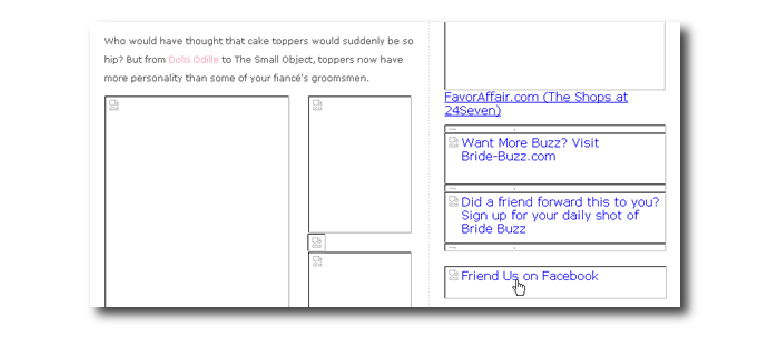
Best practice #8: Test it out
Do you taste a little bit of the food you’re cooking before you serve it to your guests, making sure it’s as delicious as can be? Of course – you wouldn’t want to surprise someone with a bad meal. Email marketing functions on the same principal: test before serving!
A/B testing your emails before you press send will give you the chance to make sure everything is in working order. We all know the feeling of pressing send, and right as the email starts its journey to your contacts’ inboxes, you spot a typo. That can make your stomach turn faster than pumpkin pie leftovers in December. Testing is going to help you avoid this feeling.
But don’t just check for typos. Also, give the links a click to make sure they go where you want, check to see that the photos are rendering correctly, and ensure that you’re not missing any data. The list goes on and on.
Here’s a quick checklist of things to test before sending your email marketing campaign:
Spelling and typos
Links and CTAs
The images show up correctly and all HTML is correct
The email design looks great on both mobile devices and desktop email clients
Any email templates you regularly use look consistent
You chose the right contact list
Sending from the correct address
It’s also a good idea to send it to at least one other member of your team. A fresh pair of eyes that haven’t been staring at the same email all day will be able to catch those expiration-date details that might have slipped past you.
At Mailjet, you can preview how your emails will appear on mobile and desktop, and you can send out a test email to anyone you want before you send it out to your entire contact list.
Best practice #9: Make use of those email metrics
So, you’ve hit send and that’s it now, right? Nope. This is where email tracking tools come in handy, as they’re what’s going to make future campaigns even better. The email marketing metrics can include insightful data such as open rates, click-through rates, conversion rates, and more.
After you send out your email, review the stats you have at the end of the day, the next day, the following week, and even over the course of the next few weeks! A lot can be learned from your email metrics about what kinds of messaging your customers like, send times, type of emails, and maybe even more importantly, what they don’t like.
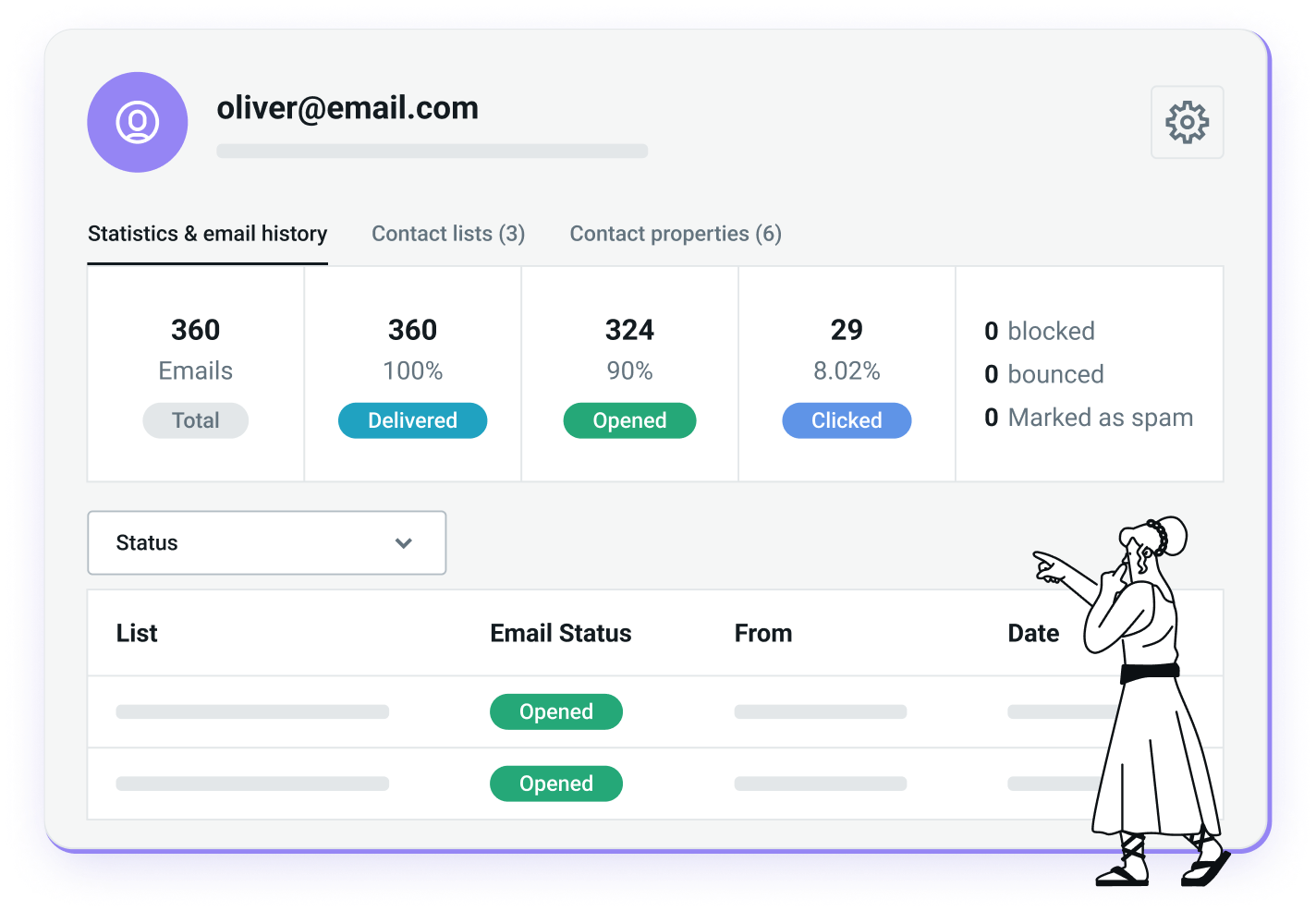
Metrics such as open rates, click rates and A/B test results are just the tip of the iceberg. Reviewing your data routinely, and then creating and narrowing down email hypotheses that you’ve come up with is a sure way to improve your engagement rate.
And besides, look at it this way: coming up with all those hypotheses and giving them a test will make you feel a little bit like a scientist. A cool, email marketing scientist.
Best practice #10: Request subscriber feedback
As much as we love statistics here at Mailjet, we also know they can only tell you so much. So how can you dig a little deeper? Why not go ahead and ask your subscribers.
Customer surveys, interviews, and even a user case study or two can act as a quality control test. There are a ton of questions you can ask your subscribers that could give you valuable insight into your sending, and help you understand what you should be placing more focus on. Questions about the kind of content to include, promotions they want to see, products they love and the frequency of the sending are just a couple suggestions.
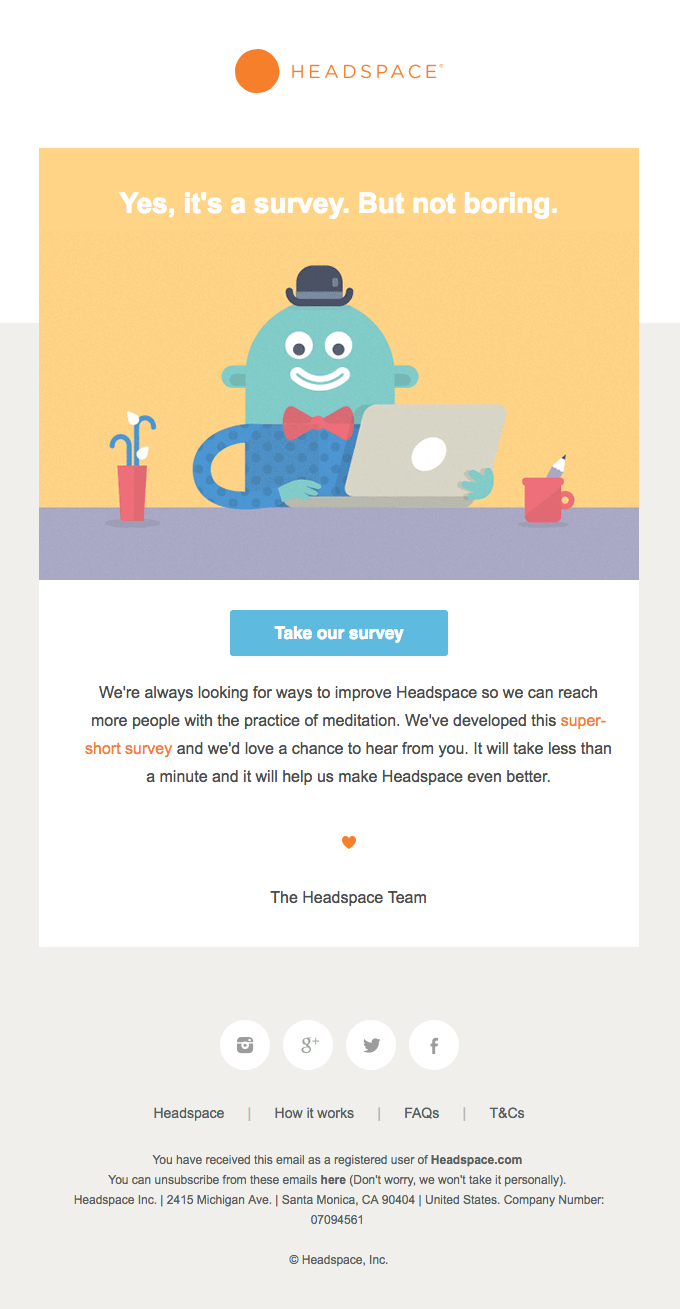
Best practice #11: Keep the spam in the can
After spending so much time optimizing your emails, you must make sure that you keep spam at bay. Yeah, we know…this one may seem self-explanatory, but you may be doing some spammy things without realizing it. We’ve got a full blog post on how to avoid email spam filters that you should definitely check out, but we’ve summarized some of the big ‘don’ts’ below.
The biggest and most obvious one is purchasing lists – just don’t do it. It is better to build up a contact list that opted-in to receiving your emails so that you have engaged customers that won’t mark your emails as spam.
Next up, make double-sure that the content of your email is relevant. Yes, we already dedicated a whole section to it, but relevant content is the key to good email engagement. Your customers signed up for your emails for a reason and you want to make sure you’re delivering. Focus on email content that appeals to your target demographics and highlights the answers to their needs.
Your subject line is also something to double-check. Practices, like writing it in ALL CAPS or throwing in far too many emojis can make you look spammy in the inbox. There are also some words that you really don’t want to use (like “free” and “prize”) if you don’t want to sound the spam alarm.
Google and Yahoo recently rolled out a new set of requirements for brands sending bulk email (5000+ emails a day) to reduce the risk of spam, phishing, and other malicious activities while improving the delivery of legitimate emails to subscribers' inboxes.
Best practice #12: Clean your list
It may seem tedious, but like avoiding spam, routinely cleaning your contact list is another important key to achieving great deliverability. And, like all our preceding tips, it’s something you should make routine.
Cleaning your list means removing bounces, blocks, unsubscribes and inactive contacts from your list so you can avoid being marked as spam by frustrated customers that do not want to receive your awesome emails anymore.

You may not think cleaning your list is a big deal, but data from our 2024 Email Engagement report showed that 17.9% of respondents unsubscribe due to lack of interest and an additional 17.3% due to irrelevant content.
These types of non-engagement and negative engagement have a huge impact on your deliverability, so regular list-cleaning is a task for all email marketers to take seriously.
Speaking of unsubscribes, it’s important that you add an unsubscribe link in every one of your emails, and make sure it is visible. We know that you put in a lot of work to add them to your contact list, and this may seem contradictory to your goal, but we promise it’s for your own good. I mean, when it comes to email, we’re kind of the experts.
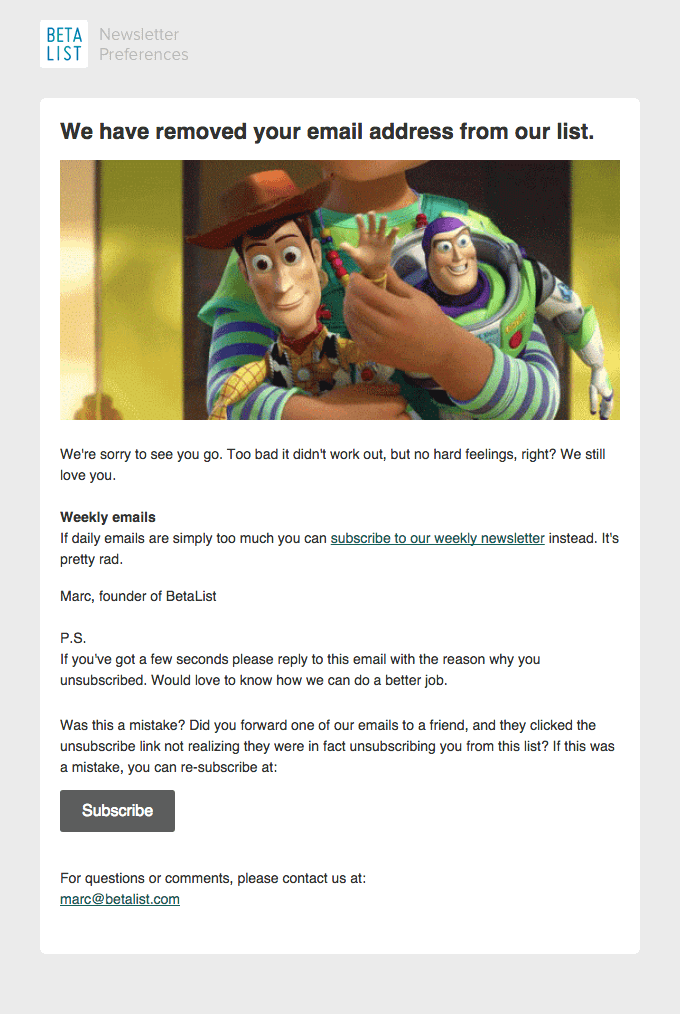
Customers that can’t find your unsubscribe link may resort to marking you as spam if they can’t find any other way, and racking up enough of those means you won’t be able to reach any of your contacts, including the ones that love your emails. Also, an unsubscribe link is mandatory to remain GDPR compliant and compliant with the CAN-SPAM Act, which is something we take very seriously here at Mailjet – like “mom-grounding-you-for-a-month” serious.
Cleaning your email list regularly ensures that those emails you’ve worked so very hard on go to those who will want and engage with them. And that’s a win for you and your subscribers.
Wrapping up
Email marketing can be a daunting task. From subject lines, to the subject of your email, all the way to how to gauge how interested your target audience is in your campaigns, there is a lot to consider. But if you follow best practices and have faith in your marketing tools, it will make it easier to know what to focus on and what to prioritize. From the planning of your email, all the way down to the tracking of the stats, Mailjet can help you make the most of these email marketing best practices – and emailing will become a lot less stressful than parallel parking.
Join our newsletter to stay up to date on the latest trends and create amazing, long-lasting relationships for your brand.





